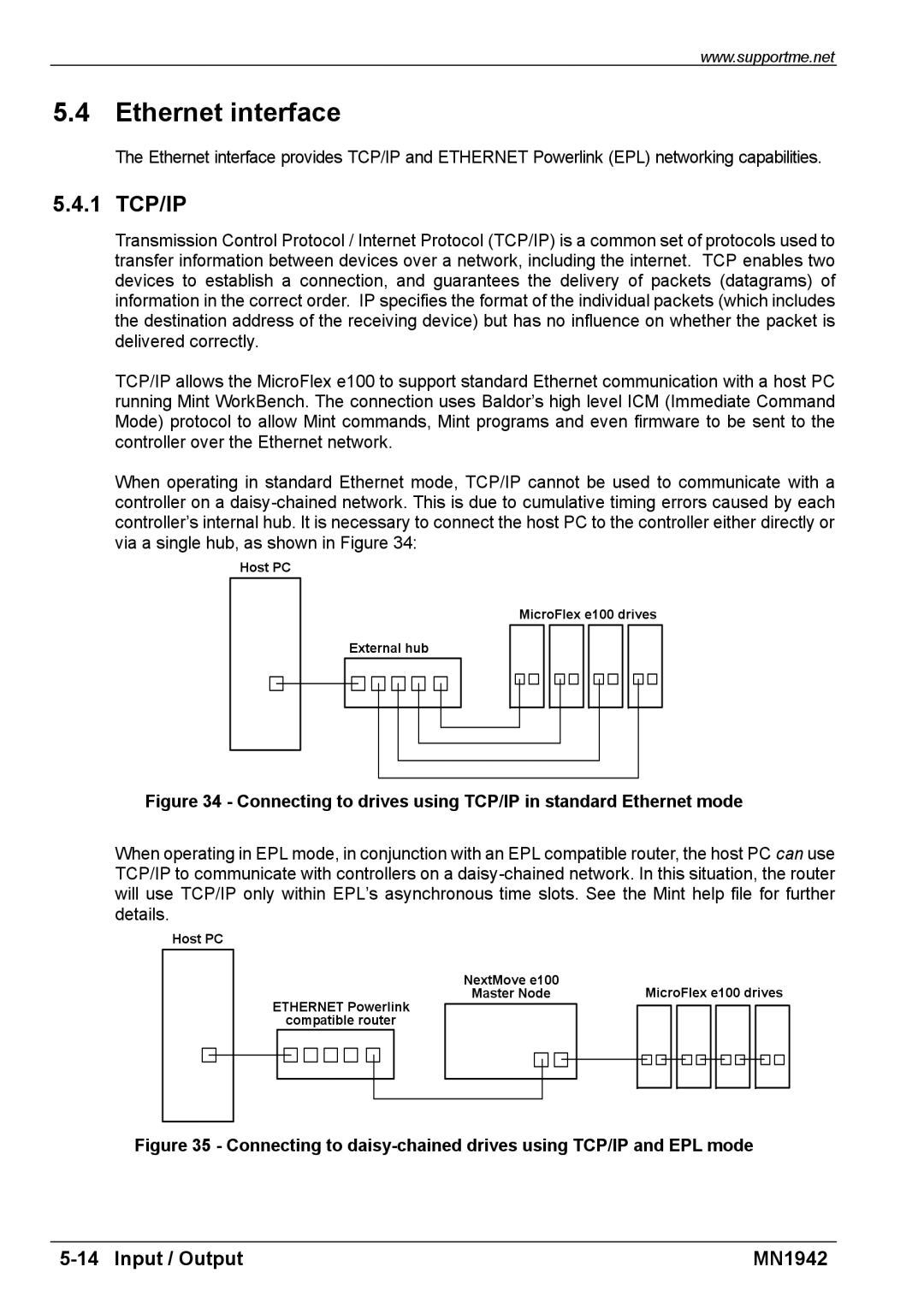
www.supportme.net
5.4 Ethernet interface
The Ethernet interface provides TCP/IP and ETHERNET Powerlink (EPL) networking capabilities.
5.4.1 TCP/IP
Transmission Control Protocol / Internet Protocol (TCP/IP) is a common set of protocols used to transfer information between devices over a network, including the internet. TCP enables two devices to establish a connection, and guarantees the delivery of packets (datagrams) of information in the correct order. IP specifies the format of the individual packets (which includes the destination address of the receiving device) but has no influence on whether the packet is delivered correctly.
TCP/IP allows the MicroFlex e100 to support standard Ethernet communication with a host PC running Mint WorkBench. The connection uses Baldor’s high level ICM (Immediate Command Mode) protocol to allow Mint commands, Mint programs and even firmware to be sent to the controller over the Ethernet network.
When operating in standard Ethernet mode, TCP/IP cannot be used to communicate with a controller on a
Host PC
MicroFlex e100 drives
External hub
Figure 34 - Connecting to drives using TCP/IP in standard Ethernet mode
When operating in EPL mode, in conjunction with an EPL compatible router, the host PC can use TCP/IP to communicate with controllers on a
Host PC
NextMove e100 | MicroFlex e100 drives |
Master Node |
ETHERNET Powerlink
compatible router
Figure 35 - Connecting to daisy-chained drives using TCP/IP and EPL mode
MN1942 |
